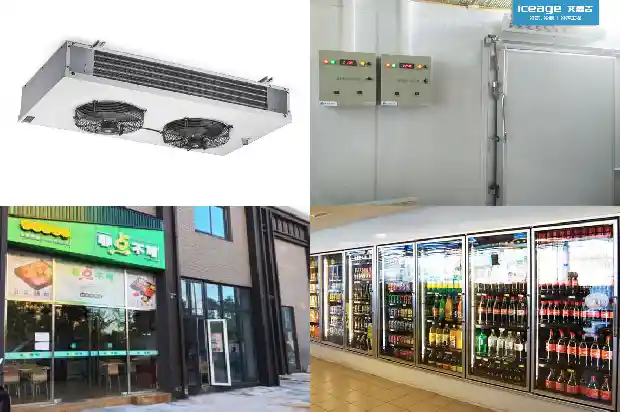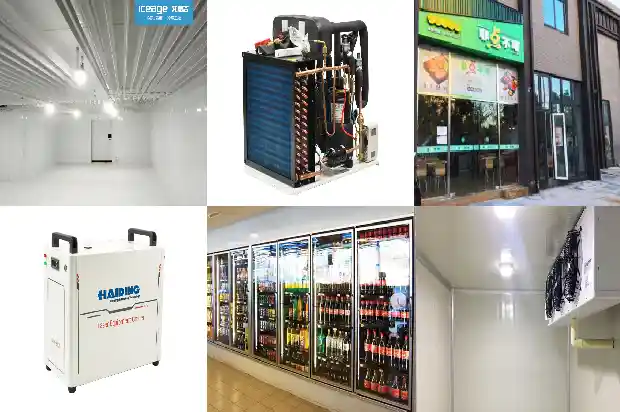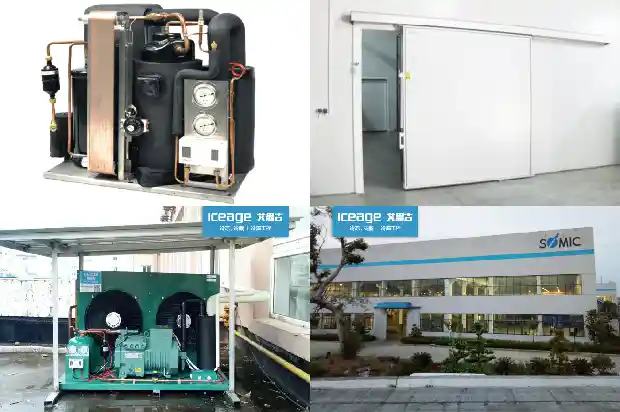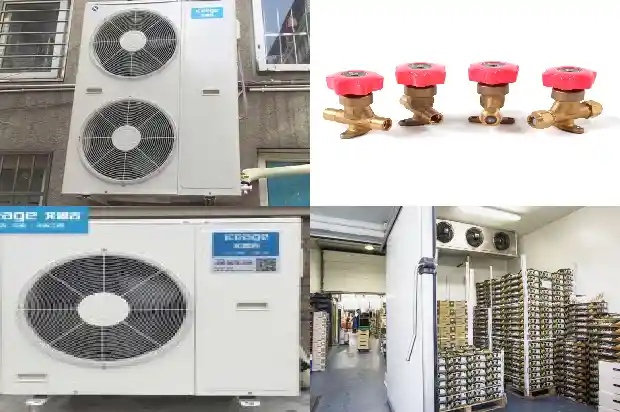Common Faults of Industrial Chillers
2025-01-10
In the industrial field, the chiller is a common temperature control equipment, which can provide constant temperature and constant flow cooling water for the use of machine tools, experimental equipment, laser equipment, rubber and plastic machinery and other equipment. During the use and operation process, some faults may occur due to natural wear, improper use or improper maintenance. When problems occur in the water pump, electronic control components and power supply, etc., generally simple faults can be quickly solved by the user's self-inspection. However, once the core components of the chiller such as the compressor, evaporator and condenser fail, professional personnel are required to handle them. According to the different refrigeration forms, industrial chillers can generally be divided into water-cooled chillers and air-cooled chillers, and the inspection contents during daily operation are slightly different. The following is a brief introduction to the faults frequently occurring in the operation of the unit and the solutions.
1. The chiller cannot start:
- Check whether the power supply voltage is normal and whether there is a phase loss; check whether the circuit wiring of the chiller is loose and tighten the connectors2.
2. The circulating water pump cannot operate:
- Check whether the overload protection of the AC contactor connected to the water pump is activated. If the circuit of the water pump is cut off due to the overload protection, first check whether the power supply voltage conforms to the voltage value marked on the nameplate of the chiller, and then check whether the impeller of the water pump can rotate normally. After eliminating these problems one by one, reset the RESET key of the overload protection3.
- For air-cooled chillers with a specification of less than 3HP, most of them adopt a single-phase voltage of 220V. It is necessary to check whether the capacitor of the water pump is burned out. If the coil of the circulating water pump is burned out, the water pump needs to be removed and repaired or replaced3.
3. The unit has a high-pressure alarm:
- First, rule out whether it is a false alarm caused by an electrical fault. For example, the false alarm caused by the dampness, poor contact or damage of the high-voltage protection relay, the dampness or damage of the electronic board, and the communication fault6.
- Then check the cooling water flow. If the flow is insufficient, the pressure difference between the inlet and outlet water of the unit will become smaller and cause an alarm. The possible reasons for the insufficient water flow are: the system is short of water or there is air. The solution is to install an exhaust valve at the high point of the pipeline for exhaust; the filter of the pipeline is blocked or the filter is improperly selected (for example, the water passing capacity is limited due to the too fine filter screen), and an appropriate filter should be selected and the filter screen should be cleaned regularly; the water pump is too small and is not matched with the rated cooling water flow.
- If it is an air-cooled chiller, it may be that the condenser fan fails, such as the condenser fan does not start or reverses or the fan contactor is broken. First, observe whether the condenser fan operates normally. If the fan does not operate, check whether the motor is damaged. In addition, check whether there is dirt on the surface of the condenser fins or a lot of dust on the fins, and flush and clean the surface of the condenser fins with compressed air or a high-pressure water gun.
- After the refrigeration system of the unit is repaired, if the vacuum is not completely pumped and there are non-condensable gases such as air and nitrogen in the refrigerant, a high-pressure alarm will also occur. It is necessary to discharge the refrigerant of the system again, re-pump the vacuum and then recharge the refrigerant. Or if the high-pressure alarm is caused by excessive refrigerant charge, it is necessary to check the pressure value of the refrigerant in the system to determine whether the refrigerant is overcharged.
4. The unit has a low-pressure alarm:
- First, rule out the false alarm caused by the electrical fault. For example, the low-voltage alarm caused by the damp short circuit, poor contact or damage of the low-voltage protection relay, the dampness or damage of the electronic board, and the communication fault. Check the control circuit and the corresponding electrical components.
- Check whether the system is short of refrigerant and whether there are leaks in the pipelines of the refrigeration system. If there are leaking parts, they should be repaired by welding and the refrigerant should be supplemented.
- Check whether the filter is blocked and disassemble and clean or replace the filter. Check the opening degree of the expansion valve and appropriately reduce the opening degree of the expansion valve.
- Check the inlet water temperature and inlet water volume of the evaporator. If the inlet water set temperature is too low or the water volume passing through the evaporator is insufficient, a low-pressure alarm will be caused.
5. The industrial chiller has a water cut-off fault:
- Generally, the chilled water system of the industrial chiller or the cooling water system of the water-cooled chiller will have a water cut-off fault.
- If the cooling water system of the water-cooled chiller has a water cut-off fault, since the heat in the condenser cannot be taken away by the cooling water, the refrigerant pressure in the condenser will increase, so the chiller will also prompt a high-pressure alarm and automatically shut down when the water is cut off.
- Most of the water cut-off faults are caused by the abnormal operation of the water pump. First, check whether the wiring terminals of the circulating pump of the chiller are loose, and use an ammeter to check whether the running current of the circulating pump is within the rated value range and whether the relay and the overload protector work normally.
- The water cut-off fault may also be caused by the problem of the water supply source. It is necessary to check whether the waterway system such as valves and pipelines is unobstructed.
Usually, the water pump in the chiller can run independently, and the waterway system can be checked without starting the refrigeration system.
6. During the daily inspection, for the refrigeration system of the industrial chiller in operation, the preventive inspection shall be carried out by the inspection method of "first look, second listen and third touch".
- "Look" means to check the indication values of the pressure gauge and thermometer of the chiller, check the lubricating oil quantity of the compressor, and check the condensation or frosting situation of the evaporator and the suction pipe. Looking at the pressure gauge means to check whether the suction and discharge pressures of the compressor are appropriate. In addition, it is necessary to check whether the pressure of the oil pressure gauge and the oil level indicator of the compressor crankcase are normal and whether the cooling rate is normal.

- "Listen" means to listen to various noises when the compressor is running, listen to the flow sound of the refrigerant in the expansion valve, and listen to various noises when the compressor is running. When the open compressor is in normal operation, it generally emits a slight and uniform "chacha cha" sound or a slight "didi di" sound of the valve plate. But the following sounds are abnormal:
- "tongtong tong" is the sound when the compressor has liquid hammer;
- "zhizhi zi" is the dry friction sound of the shaft seal of the open compressor;
- "dadada" is the internal metal impact sound of the compressor, indicating that the internal moving parts are loose;
- "papapa" is the sound after the drive belt is damaged;
- "kongkong kong" is the impact sound of the loose fit of the keyway of the compressor flywheel.
- In addition, listen to the flow sound of the refrigerant in the expansion valve. The normal sound should be a slight "hiss—" sound. A louder "hiss—" sound and intermittent "hiss, hiss" sounds all indicate that the expansion valve is not working properly.
- "Touch" means to touch the hot and cold degree of the pipelines and components of the system and perceive the vibration situation of the equipment. On the premise of ensuring safety, you can touch the temperature of the front and rear end covers of the compressor 15 minutes after the compressor is started (generally not exceeding 30 degrees).
If it is found to be too hot, it means that the temperature is too high and the machine should be stopped for inspection. Or when the machine is running, touch the temperature of the filter surface. If the temperature is low or even the surface has condensation, it means that the filter is blocked. In addition, when the refrigeration device is in normal operation, the suction pipe of the compressor should be condensed or frosted, and the exhaust pipe should be relatively hot. If not, it means that the refrigeration system of the chiller is not operating normally. At the same time, observe whether the unit vibrates greatly.
When the unit vibrates greatly, it is mostly caused by the looseness of the foundation nut.
Related Articles
- Basic Faults and Preventive Maintenance of Water - cooled Units
- Composition and Common Faults of Screw Refrigeration Compressors
- Common Faults and Solutions of Central Air - conditioning Chiller Units
- Common Faults and Corresponding Solutions of Chillers During Use
- Analysis and Troubleshooting of Common Faults in Air - source Heat Pumps
- Maintenance Methods for Faults in Screw Refrigeration Air - conditioner Compressors
- Common Faults and Troubleshooting Methods of the Moving Mechanism of Piston Compressors
- Analysis of Common Faults in Compressor Overcurrent and Burnout
- What are the reasons for the inactivity of the automotive air conditioning compressor? What are the common faults?
- Common Faults of HVAC Fan Coil Units
- Common Operating Faults and Treatment Methods of Centrifugal Compressors
- Common Four Faults and Replacement Methods of Scroll Compressor
- Analysis of Refrigeration Compressor Motor Faults
- Analysis and Treatment of Common Low-Pressure Faults in Chillers
- Analysis and Treatment of Common Low Pressure Faults in Chillers
- Common faults in refrigeration system (discharge temperature and pressure)
- Common Faults of Screw Compressor
- What Are the Differences Between Chillers and General Water - cooled Equipment?
